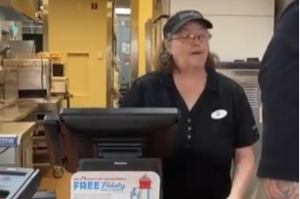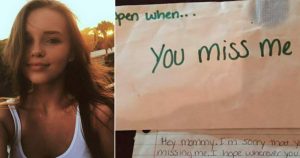Despite the clamor to hurry up the US vaccination drive towards COVID-19 and get the nation again to regular, the primary three months of the rollout recommend quicker just isn’t essentially higher.
A shocking new evaluation discovered that states similar to South Carolina and Florida that raced forward of others to supply the vaccine to ever-larger teams of individuals have vaccinated smaller shares of their inhabitants than those who moved extra slowly and methodically, similar to Hawaii and Connecticut.
The rationalization, as consultants see it, is that the rapid enlargement of eligibility brought on a surge in demand too huge for some states to deal with and led to critical disarray. Vaccine provides proved inadequate or unpredictable, web sites crashed and telephone strains turned jammed, spreading confusion, frustration and resignation amongst many individuals.
“The infrastructure just wasn’t ready. It kind of backfired,” mentioned Dr. Rebecca Wurtz, an infectious illness doctor and well being knowledge specialist on the University of Minnesota’s School of Public Health. She added: “In the rush to satisfy everyone, governors satisfied few and frustrated many.”
The findings may comprise an essential go-slow lesson for the nation’s governors, a lot of whom have introduced dramatic expansions in their rollouts over the previous few days after being challenged by President Joe Biden to make all adults eligible for vaccination by May 1.
“If you’re more targeted and more focused, you can do a better job,” mentioned Sema Sgaier, government director of Surgo Ventures, a nonprofit health-data group that performed the evaluation in collaboration with The Associated Press. “You can open it up — if you have set up the infrastructure to vaccinate all those people fast.”
Numerous components stymied state vaccination efficiency. Conspiracy theories, poor communication and undependable shipments slowed efforts after the primary vials of treasured vaccine arrived Dec. 14.
But the scale of the eligible inhabitants was all the time inside the management of state officers, who made broadly various selections about how many individuals they invited to get in line when there wasn’t sufficient vaccine to go round.
When the drive started, most states put well being care staff and nursing dwelling residents on the entrance of the road. In doing so, states have been abiding by nationwide suggestions from consultants who additionally steered doing all the things attainable to achieve everybody in these two teams earlier than shifting on to the following classes.
But confronted with political stress and a clamor from the general public, governors rushed forward. Both the outgoing Trump administration and the incoming Biden workforce urged opening vaccinations to older Americans.
By late January, greater than half the states had opened as much as older adults — some 75 and above, others 65 and up. That’s when the true issues began.
South Carolina expanded eligibility to individuals in Steven Kite’s age group Jan. 13. Kite, 71, instantly booked a vaccination at a hospital. But the following day, his appointment was canceled together with hundreds of others due to a scarcity of vaccine.
“It was frustrating at first,” Kite mentioned. After per week of uncertainty, he rescheduled. He and his spouse are actually vaccinated. “It ended up working out fine. I know they’ve had other problems. The delivery of the doses has been very unreliable.”
In Missouri, the place greater than half of adults have been eligible for pictures, big-city shortages despatched vaccine seekers driving a whole lot of miles to rural cities. Dr. Elizabeth Bergamini, a pediatrician in suburban St. Louis, drove about 30 individuals to usually out-of-the means vaccination occasions after the state opened eligibility to these 65 and older Jan. 18 after which expanded additional.
“We went from needing to vaccinate several hundred thousand people in the St. Louis area to an additional half-million people, but we still hadn’t vaccinated that first group, so it has been this mad dash,” Bergamini mentioned. “It has just been a whole hot mess.”
“It got a little chaotic,” mentioned Dr. Marcus Plescia, chief medical officer of the Association of State and Territorial Health Officials. “We created far more demand than there was supply. That stressed the system and that may have left the system less efficient.”
Plescia mentioned the evaluation means that “a more methodical, measured, judicious, priority-based approach — despite people’s perception — actually can be as efficient, or more efficient, than opening things up and making it available to more people.”
In retrospect, well being staff and nursing dwelling residents have been the simple teams to vaccinate. Doses might be delivered to them the place they lived and labored.
“We knew where they were and we knew who they were,” Wurtz mentioned. As quickly as states went past these populations, it obtained more durable to seek out the precise individuals. Nursing dwelling residents stay in nursing properties. People 65 and older stay in all places.
West Virginia bucked the development with each excessive numbers of eligible residents and excessive vaccination charges in early March, however the state began sluggish and constructed its capability earlier than increasing eligibility.
Similarly, Alaska maintained a excessive vaccination rate with a smaller eligible inhabitants, then threw pictures open to everybody 16 and older March 9. This huge improve in eligible adults close to the top of the interval studied led the AP and Surgo Ventures to omit Alaska from the evaluation.
The evaluation discovered that as of March 10, Hawaii had the bottom share of its grownup inhabitants eligible for vaccination, at about 26 %. Yet Hawaii had administered 42,614 doses per 100,000 adults, the eighth-highest rate in the nation.
Thirty % of Connecticut’s grownup inhabitants was eligible as of the identical date and it had administered doses on the fourth-highest rate in the nation.
In distinction, Mississippi had the sixth-largest share of its grownup inhabitants eligible at about 83 %. Yet, Mississippi had administered solely 35,174 whole doses per 100,000 adults, rating forty third amongst states.
Missouri, with 61 % of its inhabitants eligible, had disbursed 35,341 doses per 100,000 adults.
Seven states in the underside 10 for total vaccination efficiency — Georgia, Tennessee, Texas, Florida, Mississippi, South Carolina and Missouri — had larger-than-average shares of their residents eligible for pictures.
Among high-performing states, 5 in the highest 10 for prime vaccination charges — New Mexico, North Dakota, Connecticut, Wyoming and Hawaii — caught with extra restrictive eligibility. Another two high-performing states from the highest 10 — South Dakota and Massachusetts — have been about common in what number of residents have been eligible for vaccine.
“This is a thorough analysis showing a clear association between breadth of eligibility and vaccination rates across states,” mentioned Dr. Mark McClellan, a former head of the Food and Drug Administration who was not concerned in the brand new evaluation however reviewed it for AP.
The better-performing states might be getting outcomes by paying nearer consideration to vaccine provide, completely vaccinating high-risk teams after which opening to further classes extra slowly as they await provides to build, McClellan mentioned.
What occurs subsequent will rely on how a lot states can enhance their vaccine supply methods and whether or not Americans stay longing for vaccination, even because the risk eases with extra individuals protected and case numbers dropping.
“Have states used this time wisely and fruitfully to lay down the infrastructure needed to open it up to more people?” Sgaier requested.






